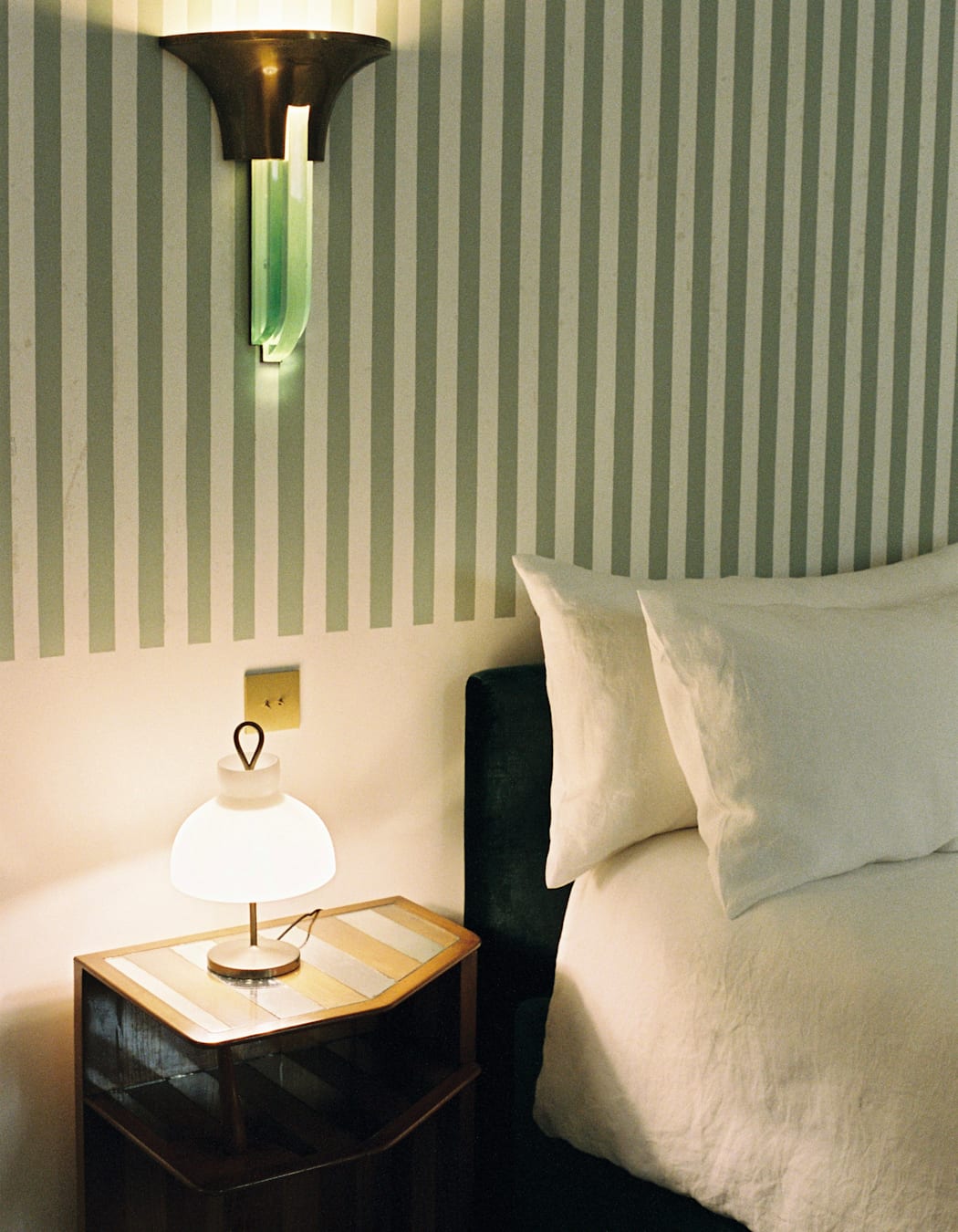I realise, standing under a sky-high shower looking through a polished brass door back into our bedroom, what it is to stay at Lecce hideaway Palazzo Luce. It is perhaps the closest thing you can get to stepping through the frame of a painting and into the image itself. And it’s not just one image: each time I move my head, or take a step, the frame renews, and yet another masterpiece emerges.
In our suite, a celestial six metres above us the artist David Tremlett has painted a site-specific fresco, a patchwork curlicue that spins future and past. In my opinion, a fresco in a bedroom is one of the most enjoyable ways to view a piece, since – I am lazy – you get to take it in from the comfort of the king-size bed. But also because it is a privilege to stay so close to a piece of such significance, and see it shift through the day, turning greyscale at night, its blues, creams and single core of red waking with daylight. The room comes to life around it – a trompe l’œil layering of painted panels, and delicately trippy hand-drawn stripes that sweep from the wall to the floor.
Here, everywhere you look there’s something extraordinary, and everything is a true original, since reproduction is decidedly not a word in the Palazzo Luce vocabulary. The wardrobe, the headboard, the 1950’s spearmint bathroom suite: Gio Ponti. The cyanotype vases lining the walls: Ettore Spalletti. The epic, amber-toned light-fixture: Hans-Agne Jakobsson. It’s enough to make you want an audio guide. And capping off the masterpiece of course, Mrs Smith comes into view, Botticelli’s Venus-like, telling me she’s fallen in love with a cloud-soft turquoise Society Limonta alpaca blanket…
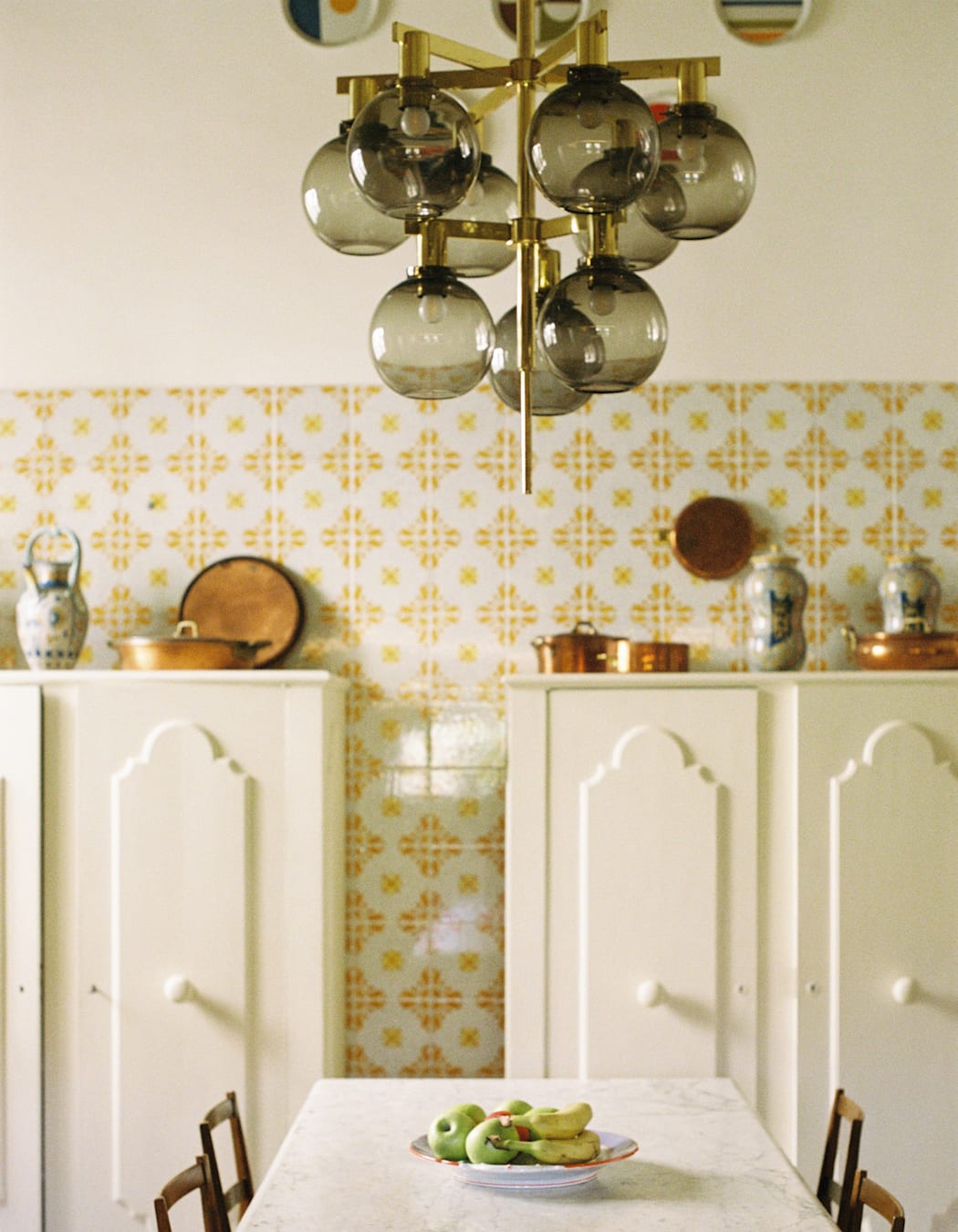
This has truly been a rags to riches tale. We left England’s March cruelty to escape to Puglia, and ever since touching down in Brindisi, it’s felt like a renaissance of sorts. Our skin saying ‘hi’ to sun again, a blueness of sky that makes you want to walk with your neck tipped back, freckles finding their way back to the surface. For those wondering what Puglia is like at this time of year, it’s been one of the only Italian phrases I know: molto bene. The wind can be whippy, but Italians will know how to read it, so you can head to the right side of the coastline. And you’ll have it all to yourself: the see-through waves, the silver-leafed olive trees, the carpets of wildflowers that look like they’re lit from within. And enough tagliolini ai frutti di mare, of course, that you start to feel embarrassed ordering it.
And now we’re staying in a palace. Sure, the word palazzo can be thrown around loosely, but this one has earned both stripes and stars: a former home of Maria d’Enghien (the future Queen of Naples), it was built in the 14th century, and then totally reimagined and reborn by a Milanese art collector, who fell in love with the property at first sight, and saw in its singularity the perfect space to house her favourite works.
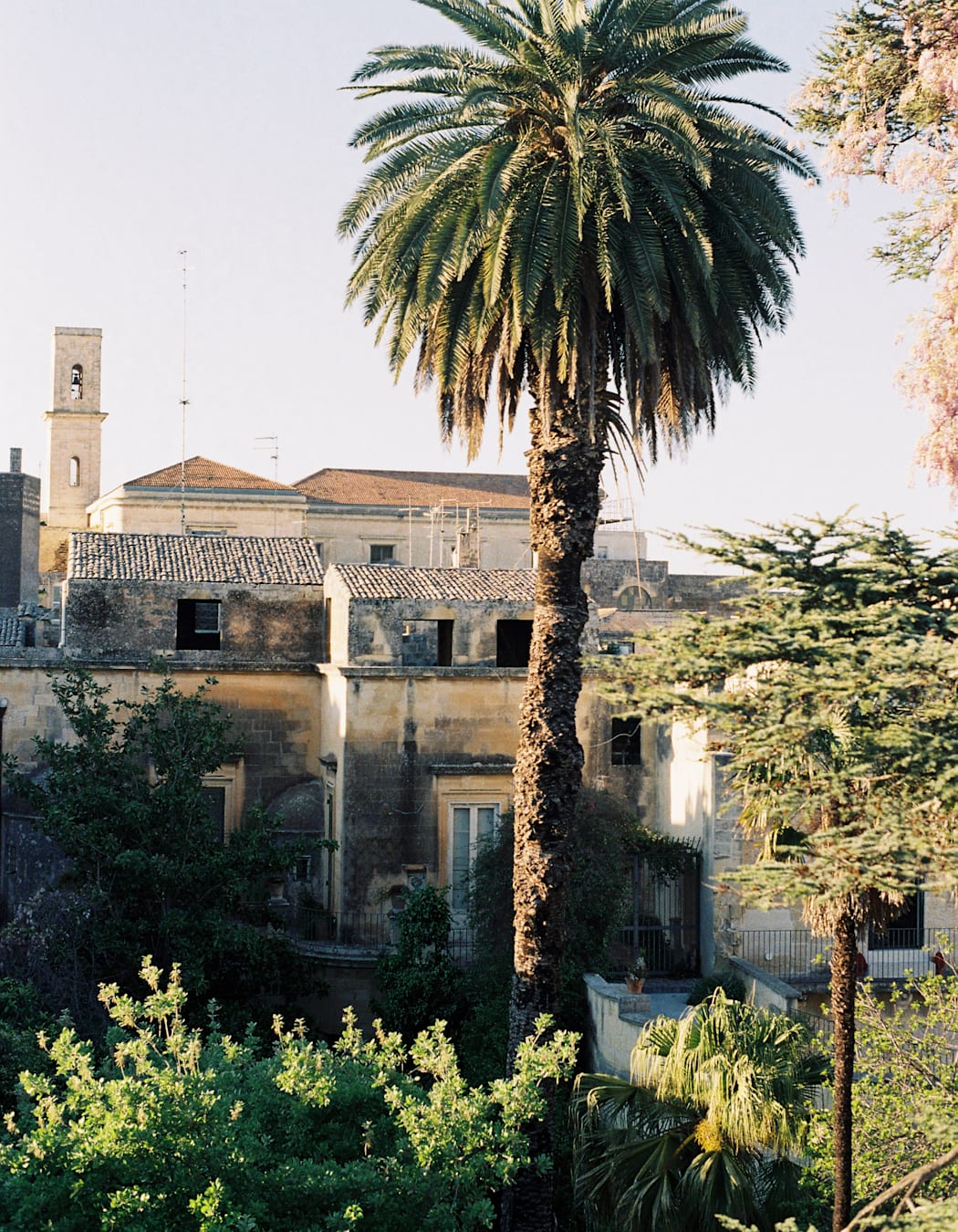
Wander through Luce, and you’ll brush shoulders with a candle-holding Marina Abramovi?, walk over Joseph Kosuth carpets, and be bathed in the blue neon light of an Alfredo Jaar. Unlike other so-called art hotels, this goes far beyond the one-off piece in reception, with a truly world-class collection And it’s no-holds-barred. This gives staying at Luce something of a Night at the Museum feel: there’s a touch of pure fantasy about it as the red ropes and glass cages all disappear and you’re left alone with Marina and co.
Continuing the ‘Droste effect’ of art within art and beauty within beauty, we wander out into the city. Lecce, the capital of Salento, balanced at the centre of Italy’s heel but with the sea in touching distance on either side, is crafted from a stone which looks soft enough to spread. Its Baroque buildings teeter the colour of clouds in a good sunset: cream in daylight, before starting to blush. And it’s the perfect size to weave and wander through. We find a middle ground between church visits (Mrs Smith’s request), and napping on sun-toasted tiles on Palazzo Luce’s sprawling rooftop (mine – after all, it’s the ideal place to soak in wisteria-framed views of the Duomo and the Roman amphitheatre). We drink Primitivo Riserva that punches in, Amarone-like, at close to 16 per cent ABV, and our conversation finally gets down to the real stuff: like, if we had to, which type of Puglian delicacy would we name our children after? (Son: Orzo; daughter: Maritata – please don’t call the police).
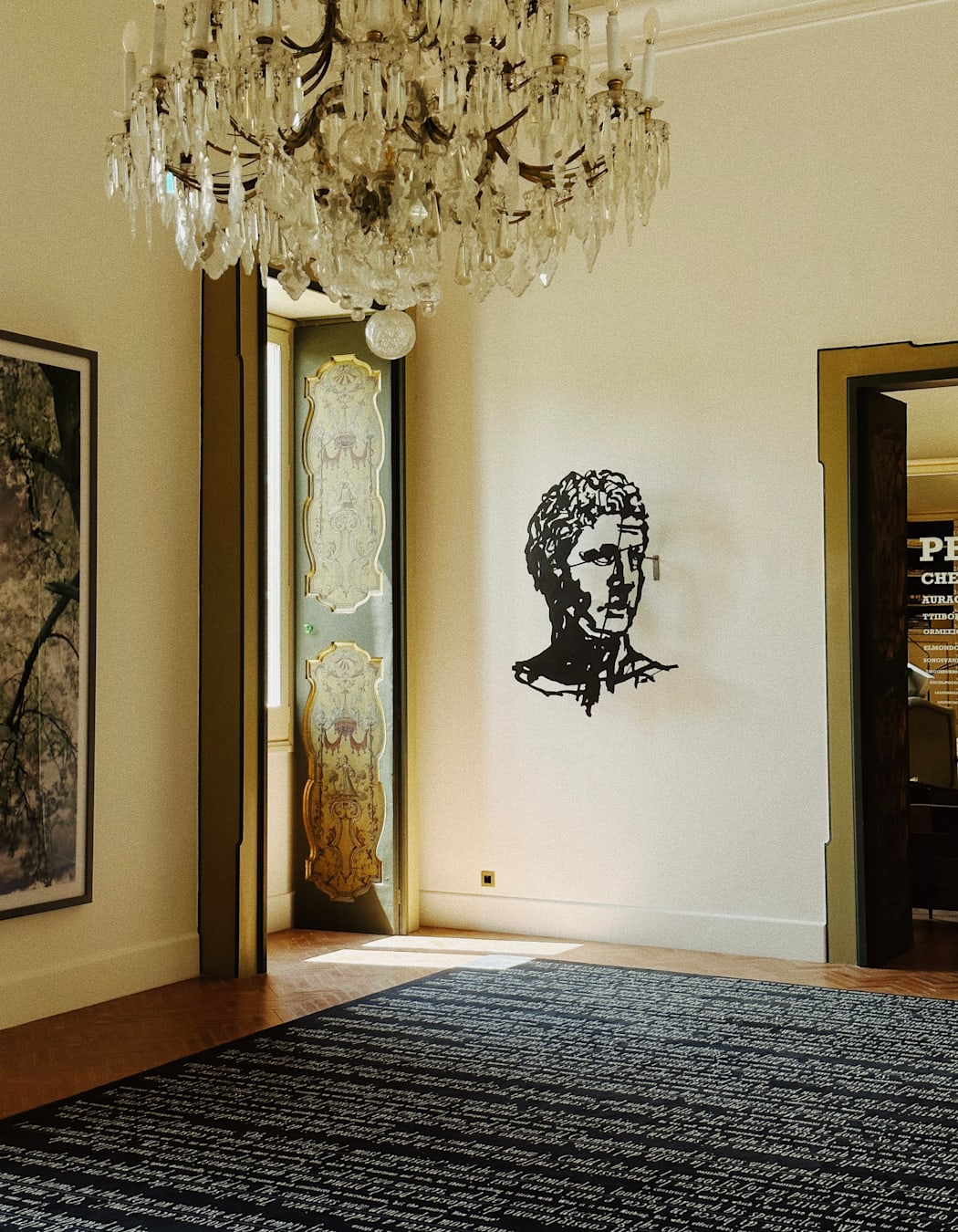
When you step into a painting you immerse yourself in the make-believe, and we dived right in on arrival at Palazzo Luce. Our Puglia road trip had driven us from the tail end of March into the opening notes of April as the season began, and in every town we stopped at shopkeepers were repainting their signs. This also meant we arrived at the hotel on re-opening night. It just so happened that the owner Anna Maria was in town too; a shining light of warmth and welcome, she invited us for dinner. (For the sake of editorial impartiality, I would like to confirm that never once was our anonymity blown.)
It unfolded like a dream: we perched on fluffy Martino Gamper bar stools while a waistcoated barman whipped us up negronis (sbagliato, of course…with prosecco in it), and small artful mouthfuls arrived on silver platters: seafood salad, baccalà and choux buns filled with ricotta. We sat around an Arthurian table topped with antique maiolica tile, and ate lobster orecchiette followed by kingfish. The group is small and warm, and we like them all so much that we not only swap numbers afterwards, but also take their advice on the speed and order with which to have Orzo and Maritata entirely to heart. And dinner, however magnificent, is just an overture. Next, we’re led through to a specially-commissioned one-off performance piece. A candlelit reading of the quotes disguised in the mirrored panels of the library (a piece of work entitled Optometric Test by Marzia Migliora), accompanied by an extraordinary five-stringed violin.
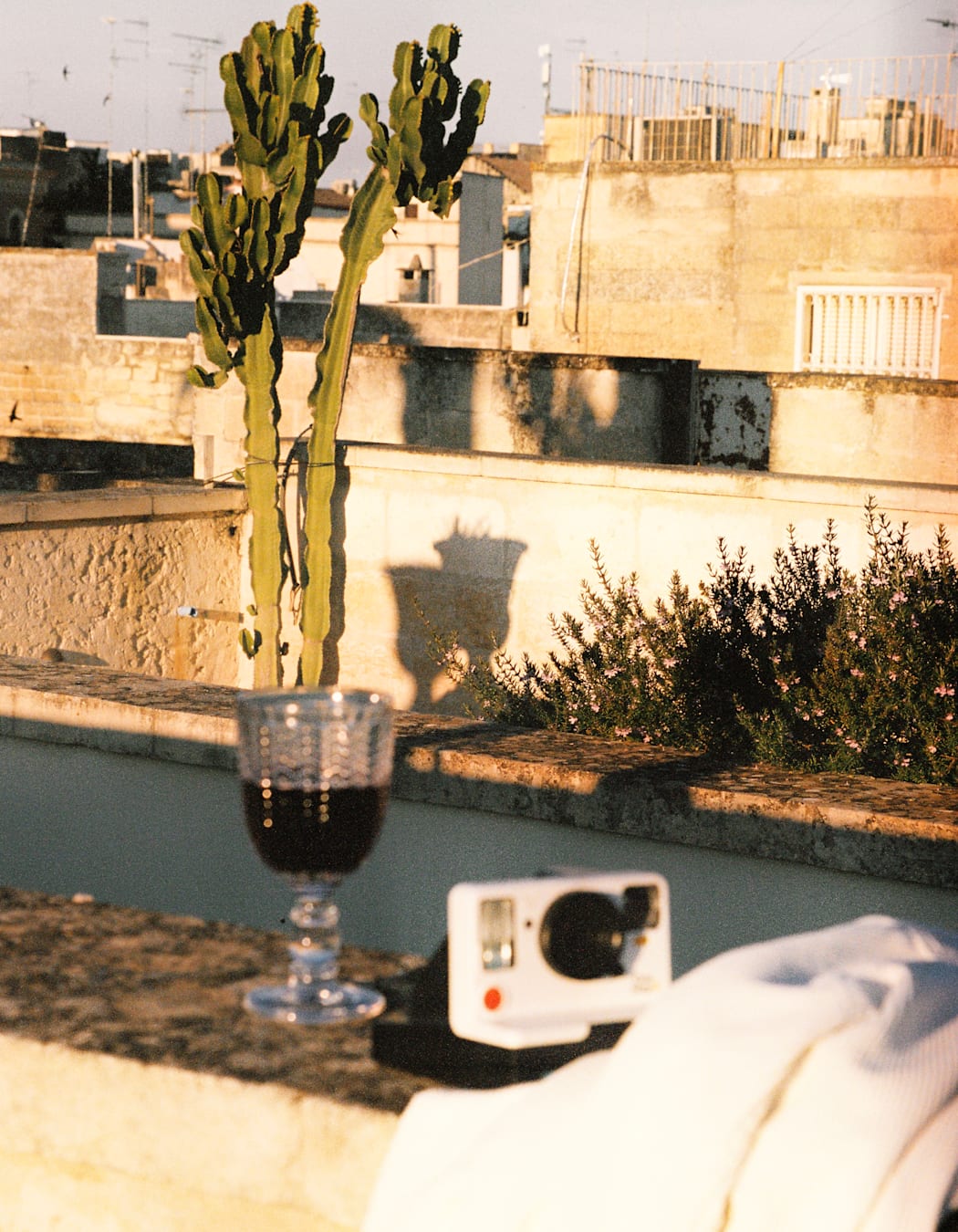
By now Mrs Smith and I had perfected the ‘try not to smile as much as you want to, so you seem vaguely normal’ look, but I can see on her face that she is thinking: how is this happening? After the show, samplings of amari arrive before we’re invited for an evening stroll to a nearby café for a midnight, oven-hot pasticciotto (like a pastel de nata but encased in a butterier pastry all the way round) as the streets of Lecce came to life long into the night with young, still-sunglassed Italians.
Back in bed, and then at breakfast, and up on the roof, and down in the far-too-stylish-to-touch exercise room (that’s my excuse anyway), artful touches are everywhere: in the range of Aesop and Biologique Recherche products, the homemade apple pie flecked with citrus peel at breakfast, the cream linen suits of the staff, the Sputnik-ish perfection of the Modino fixtures, the string of things that’s almost too long to list.
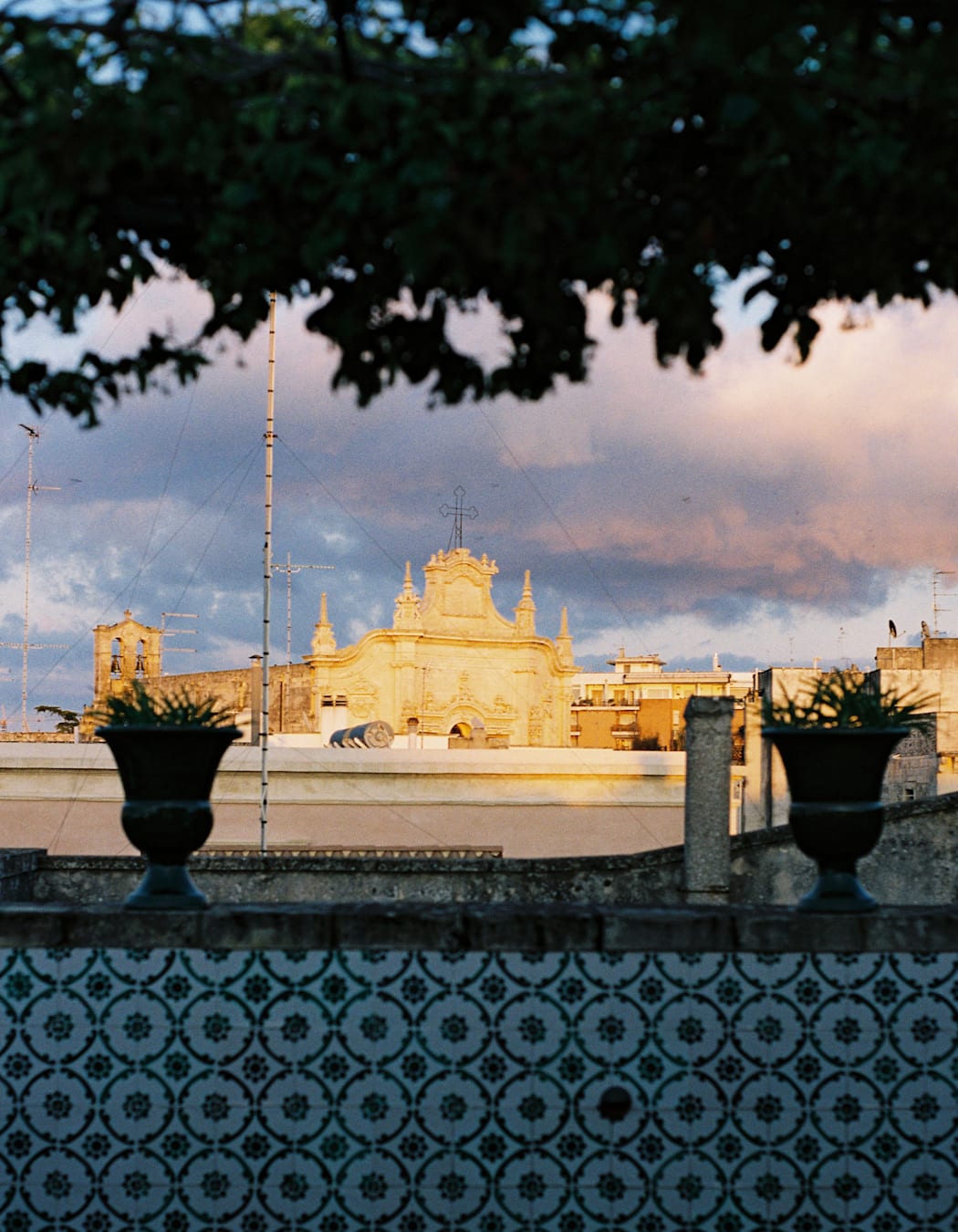
What I said about stepping into the painting – it’s not a single step. When you stay at Luce, you live in it. It’s a luminous achievement. There’s something about the scale of the experience that inspires a feeling of reverence: the hushed tones that can come upon you when you enter a cathedral. At first, you might feel a temptation to tiptoe, but don’t – as Anna Maria tells us as she hugs us goodbye, the whole point is you’re home.
Find out more about Palazzo Luce or explore our complete collection of hotels in Puglia.
Having spent her childhood holidays in the bright lights of Norfolk youth hostels, Rosa Rankin-Gee set off for most exotic bunkbeds as soon as she had the vote. She’s spent over 270 hours on buses travelling from Los Angeles to Buenos Aires, and after a stint in Andalucía, lived in Paris, which she then swapped for a life spent shuttling between Ramsgate and South London. Her first novel The Last Kings Of Sark won Shakespeare and Company’s Paris Literary Prize, and her second Dreamland offers a darker vision of seaside town Margate.
Rosa visited Palazzo Luce this year and imagery was provided by photographer Nicolas Quiniou on a separate visit.
